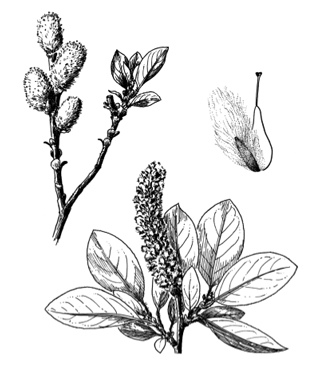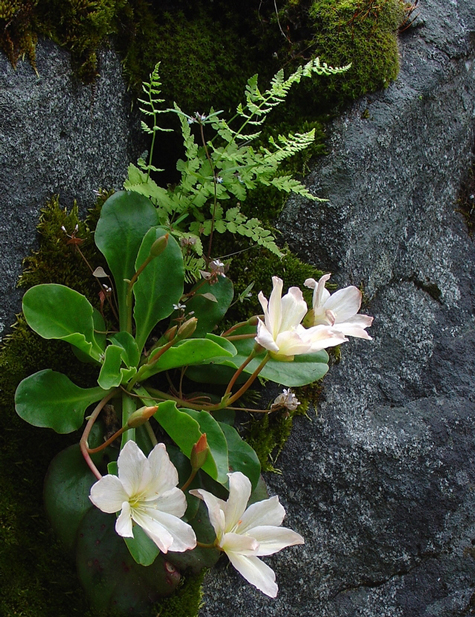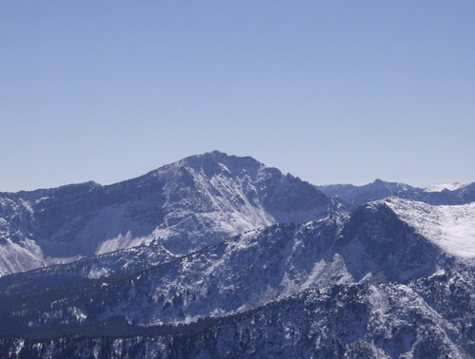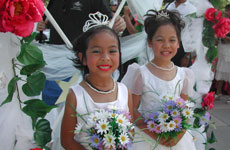Human Flower Project
The Botanist Gene
Is there a plant scientist among the limbs of your family tree? What kinds of fruit do botanists bear?

Tweedy’s Willow (Salix tweedyi): Thanks, Uncle Frank!
Image: State of Washington
Is there a gene for botanical talent? John Bartram seems to have passed it on to son William. There were the famous Hookers, father William and son Joseph, who both directed the Royal Botanic Gardens at Kew. And the Millers: Philip of the Chelsea Physic Garden and his son Charles, who became first Curator of the Cambridge Botanic Garden (1762).
On the eve the Tweedy family reunion out in Knickerbocker, Texas, this weekend, we are elated to have found a botanist-ancestor to call our own: Frank Tweedy (1854-1937). He worked for the U.S. Geological Survey in the late 19th century, exploring and collecting mainly around Yellowstone National Park, and several species from Washington State and the Rockies bear proof.
Cisanthe tweedyi (formerly known as Lewisia tweedyi) is all anyone could want for bragging rights. This beauty, native to Washington’s Cascades, is “valued by many experts as the world’s premier rock garden plant.” (Sounds like something alpine gardeners could debate long into the night.) Marc Dilley writes:
“It was named after Frank Tweedy, a U.S. Geological Survey botanical collector who made the first ascent of Mt. Stuart on August 5, 1883. Much of L. tweedyi’s renown is due to its extravagant bloom.”

Tweedy’s pussypaws (Cisanthe tweedyi)
Some call it “the world’s premier rock garden plant”
Photo: Patent Pending Blogs
This same plant‘s also known as Tweedy’s pussypaws, Tweedy’s bitterroot, and Tweedy’s lewisia – our favorite, since it portends beloved relative Louise Tweedy.
But there are more:
Cascade Reedgrass (Calamagrostis tweedyi)
Tweedy’s Willow (Salix tweedyi).
Tweedy’s Snowlover (Chionophila tweedyi)—“found in snow beds in the alpine of central Idaho and SW Montana. Its one-sided inflorescence make identification easy.”
Frank Tweedy was a younger brother of Joseph Tweedy, our great-grandfather. One went North, one went South, but both were utterly determined to leave Plainfield, New Jersey, and strike out for the great, mysterious country of the West.
Joseph and his partners were pioneering sheep ranchers along Dove Creek, near what’s now San Angelo, Texas. He and his wife Elizabeth Mellick had four children, and about 100 of their descendants will be gathering this weekend at the adjoining Knickerbocker and Tweedy ranches.

Tweedy Mountain, north of Dillon, Montana
Photo: Summit Post
So far as we know, Frank never married or bore children. He was “one of those early unsung heroes of American mountaineering,” exploring much of the mountain northwest, sending many alpine specimens back to Philadelphia for study, and writing “the eclectic booklet “Flora of the Yellowstone National Park” (1886). The aforementioned plants, at least, bear his name, as does the highest point in Montana’s Pioneer range.
Uncle Frank might have inherited his talent for botany from one of his parents – Oliver Burr Tweedy or Maria Lord. If so, sadly, it wasn’t passed on to Joseph or to us. But genealogy, a rather telescopic form of a naval gazing and one-or-more-off method of self-aggrandizement, is also a numbers game. Among the 100 or so Tweedys to gather this weekend, we hope to find one, at least, inspecting agarita berries or squatting to observe a wildflower beside the Byler Spring.
Comments
How cool is that!!!!


Congratulations, Julie! I’ll have to ask my family at the next gathering.